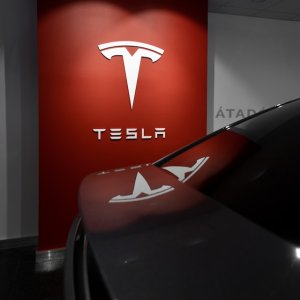
Heavy Vehicle Market 1H2021 Results
 By Alejandro Enríquez | Journalist and Industry Analyst -
Tue, 07/20/2021 - 09:19
By Alejandro Enríquez | Journalist and Industry Analyst -
Tue, 07/20/2021 - 09:19
Guillermo Rosales, Director General of AMDA, and Miguel Elizalde, President of ANPACT, presented a report on heavy vehicle sales during 1H2021. “A substantial increase in year-on-year retail sales is explained due to the low basis June 2020 represented for the sector. Sales in June 2020 were severely affected by the pandemic. That month marked the beginning of the new normal,” said Rosales.
Retail Sales
In June 2021, heavy vehicles sales grew by 25.9 percent year-on-year for a total of 2,797 units. Accumulated figures show that during 1H2021, heavy vehicle sales also grew by 27.7 percent year-on-year for a total of 15,433 units, 3,351 more units than last year. "Although the growth rate is really good news, we need to think about the big picture and take into account other elements influencing the market,” said Rosales.
Sales are still down from pre-pandemic levels. During 1H2021, sales shrank by 32.8 percent in comparison to 1H2019, when sales of heavy vehicles amounted to 21,888 units. "This confirms that we are not out of the crisis yet but there is a recovery trend. If our forecasts are accurate, 2021 will be closing with sales of about 32,700 units, which remains far from pre-pandemic levels of about 40,000 units and far from the record set in 2007 of above 50,000 units,” said Rosales.
During 1H2021, a total of 13,419 heavy trucks were sold, which represents a 30.4 percent growth year-on-year. Moreover, heavy truck sales represented 87 percent of total sales. Meanwhile, 2,014 passenger buses were sold during that period, a 12.2 percent growth year-on-year.
During 1H2021, only five brands shrank in sales: MAN (negative 23.1 percent), Man Trucks (negative 81.7 percent), Volvo Buses (negative 36 percent) and Volvo Trucks with (negative 35.1 percent). Five brands concentrate 83.3 percent of the market: Freightliner, Kenworth, International, Isuzu and Mercedes-Benz Autobuses.
As for energy sources, 99.5 percent of heavy vehicles sold were powered by diesel, followed by natural gas with 0.4 percent and hybrid units with 0.1 percent. Natural gas vehicles reported 53.7 percent growth compared to 1H20, while hybrid vehicles reported a negative growth of 85.8 percent or 91 units less during the same period.
AMDA forecasts that 2021 will close with between 31,392 and 32,354 sold units, which will represent an annual growth between 16.1-19.6 percent versus 2020.
Wholesales
Wholesale of heavy vehicles grew by 56.8 percent in 1H2021 in comparison to 1H2020, but sales shrank by 42.6 percent in comparison to 1H2019. The heavy trucks segment grew by 56.8 percent and buses by 57.1 percent; only inter-city buses reported a negative 58.8 percent growth rate during that period.
June 2019 was the last month in which the industry was able to produce and import vehicles with Euro IV / EPA 4 environmental standards. "Two years have passed since the sector adapted to import and produce Euro V / EPA 7, and those effects are seen in sales figures." 52,930 units with Euro V / EPA 07 technologies have been sold to date.
Heavy trucks sales fell by 60.8 percent compared to pre-pandemic levels but grew by 40.9 percent when compared to 2020. Bus sales have not regained their pre-pandemic rhythm either, as they fell by 70.9 percent compared to 2019 but grew by 198.2 percent compared to 2020. Production figures fell by 20.8 percent compared to 2019 but grew by 41.1 percent compared to 2020.
In the report, Elizalde also highlightzd the work ANPACT is doing with authorities to develop a new Mobility Law. “We want to acknowledge the efforts of federal authorities and legislative powers on the draft of the General Law of Mobility and Road Safety, as it is linked to the UN's Sustainable Development Goals. At the core of the law, should it become necessary to specify the use of the funds that could be created with the new law, these funds could be used for vehicle park renewal besides infrastructure. By producing vehicles with state-of-the-art environmental technologies, we could also contribute to reducing emissions. We welcome this new project, with additional comments and recommendations made by the sector,” he said.
















